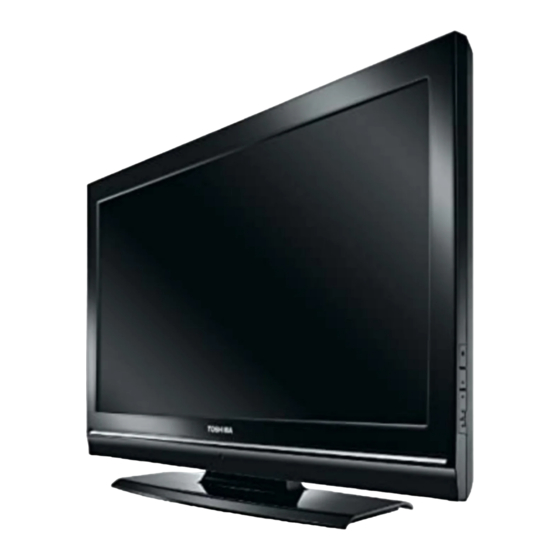Toshiba 22BV501B Panduan Pengguna - Halaman 15
Jelajahi secara online atau unduh pdf Panduan Pengguna untuk TV Toshiba 22BV501B. Toshiba 22BV501B 47 halaman. Digital series

Connecting an HDMI® or DVI Device to the HDMI Input
The HDMI input on your TV receives digital audio and
uncompressed digital video from an HDMI source device
or uncompressed digital video from a DVI (Digital Visual
Interface) source device.
This input is designed to accept HDCP (High-Bandwidth
Digital-Content Protection) programme material in digital
form from EIA/CEA-861-D–compliant [1] consumer electronic
devices (such as a set-top box or DVD player with HDMI or
DVI output).
NOTE:
• Some early HDMI equipment may not work properly with
your latest HDMI TV.
• Supported Audio format: Linear PCM, sampling rate
32/44.1/48kHz.
To Connect an HDMI Device
Connect an HDMI cable (type A connector) to the HDMI ter-
minal. For proper operation, it is recommended that you use
an HDMI cable with the HDMI Logo (
• If your HDMI connection is capable of 1080p and/or
your TV is capable of refresh rates greater than 50Hz, you
will need a Category 2 cable. Conventional HDMI/DVI cable
may not work properly with this mode.
• HDMI cable transfers both video and audio. Separate
analogue audio cables are not required (see illustration).
• To view the HDMI device video, press SOURCE button to
select HDMI1.
19&22BV501B_MB60_[GB]_(IB_INTERNET)_DVB-T_(3910uk)_10072929_10072933.indd 15
19&22BV501B_MB60_[GB]_(IB_INTERNET)_DVB-T_(3910uk)_10072929_10072933.indd 15
To Connect a DVI Device
Connect an HDMI-to-DVI adaptor cable (HDMI type A connec-
tor) to the HDMI input socket and audio cables to the SIDE AV
socket, using the supplied Side AV connection cable's RED
and WHITE inputs (see illustration).
• The recommended HDMI-to-DVI adaptor cable length is
6.6 ft (2m).
•
An HDMI-to-DVI adaptor cable transfers video only.
Separate analogue audio cables are required.
).
NOTE:
To ensure that the HDMI or DVI device is reset properly, it is
recommended that you follow these procedures:
• When turning on your electronic components, turn on the
TV fi rst, and then the HDMI or DVI device.
• When turning off your electronic components, turn off the
HDMI or DVI device fi rst, and then the TV.
- 15 -
03.10.2011 18:27:00
03.10.2011 18:27:00
